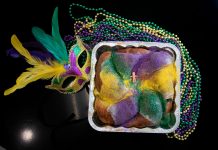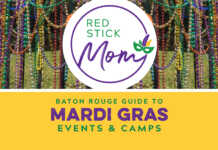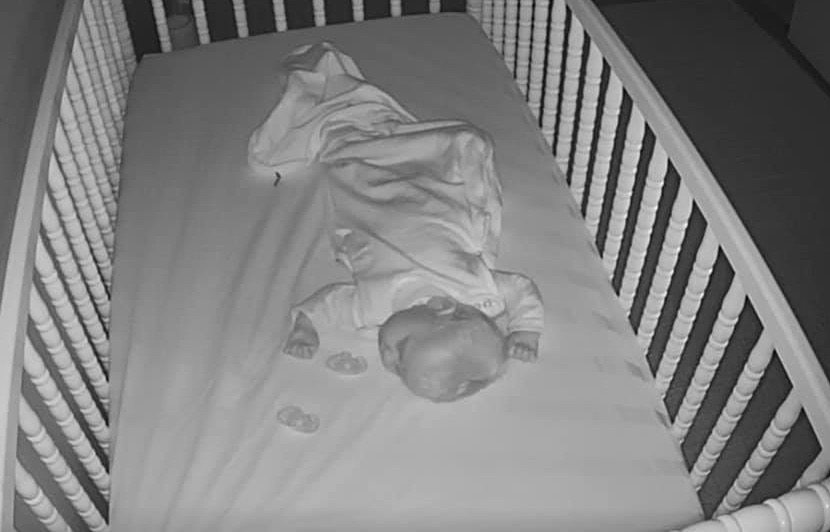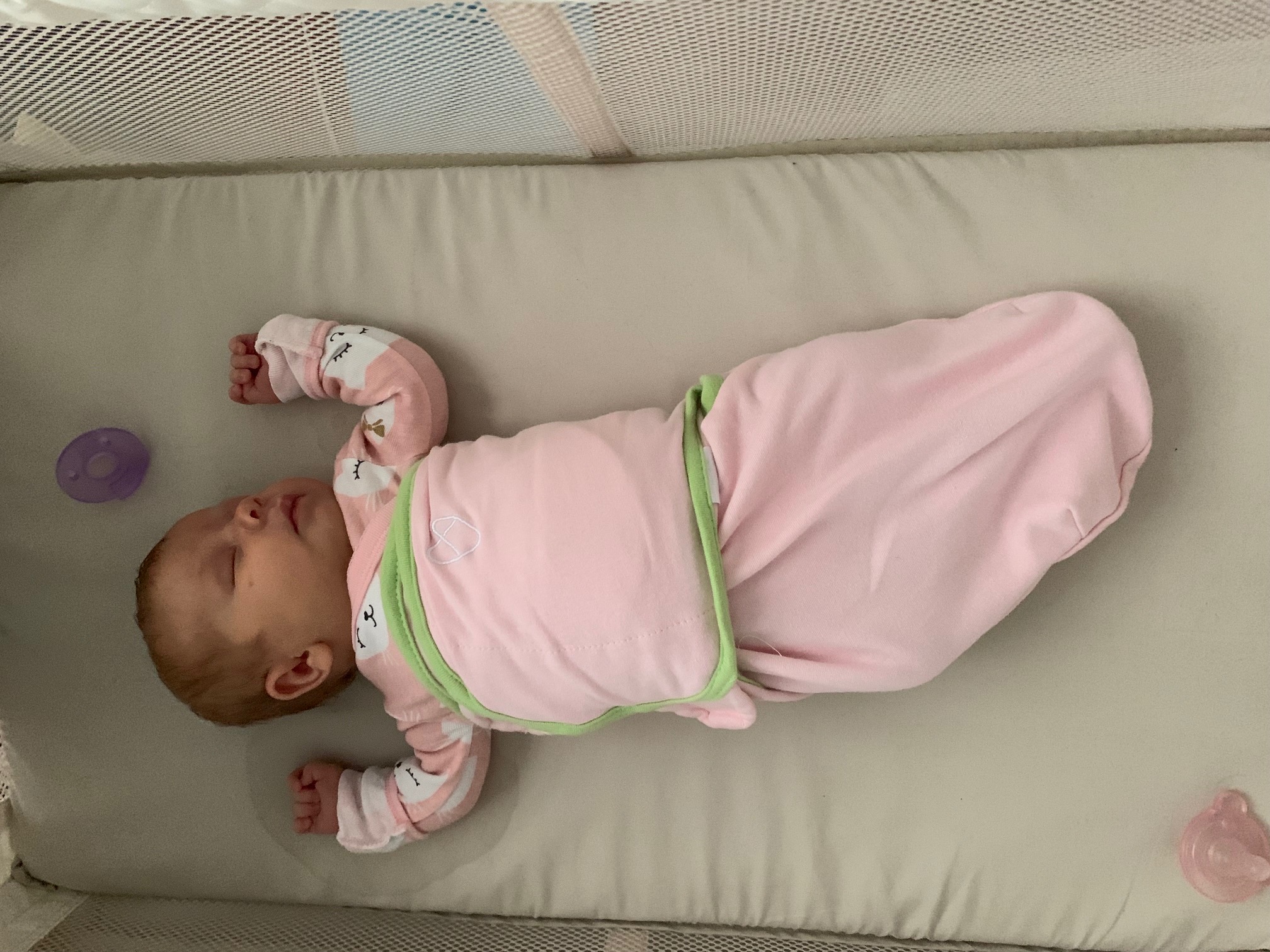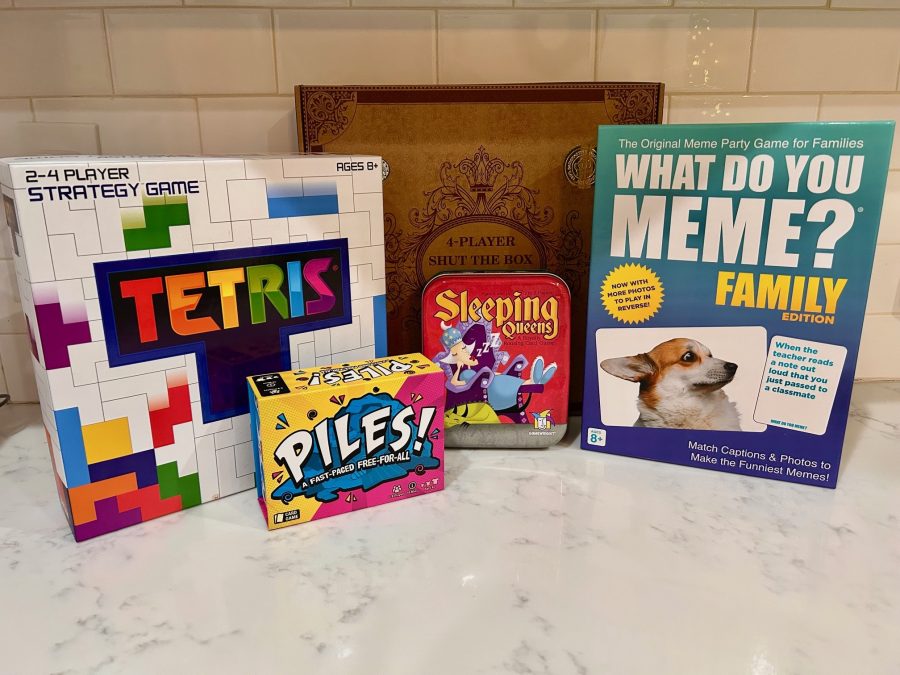Disclaimer:
If you’ve ever been in a Facebook thread about baby sleep, you’re bound to read at least one person being called a “sanctimommy.” There is a lot of back and forth in the mommy group world about the line between judging and sharing safety information. I think it’s important to note that this post is not intended to judge. I believe that parents should have all the pertinent information so that they can make the best decisions for their families. The information below is based on recommendations from the American Academy of Pediatrics (AAP). I do not claim to be a perfect parent. I have made unsafe sleep choices out of desperation and lack of knowledge. As I’ve learned more about safe sleep, I have found myself surprised by the number of products on the market that are not recommended for sleep. I always thought that if it was sold in a store, that it must be considered safe. However, this is not the case. My first child slept in a Rock N Play for months. But as I know better, I do better, and I try my best to follow AAP recommendations.
October is SIDS Awareness Month. Every mom I know has spent countless hours watching her baby breathe. Checking and double-checking to make sure they are ok and panicking the first time they sleep through the night. SIDS is particularly terrifying because of all the questions around how and why it happens. Each year in the US, approximately 3,500 babies die while sleeping. This number includes deaths from SIDS and other accidental deaths caused by suffocation or strangulation. While there is no way to prevent all of these deaths, there are many steps you can take to dramatically reduce the risks.
Safe Sleep using the ABCs
The first step to lowering the risk of sleep-related death is ensuring that your baby has a safe sleep space.
A – Alone: Your baby should have their own sleep space that is not shared with other people or pets.
B – Back: In 1994, the Back To Sleep Campaign (now called Safe to Sleep) was started based on the AAP’s 1992 recommendation that babies be placed to sleep on their backs. Since that time, SIDS rates have decreased significantly.
C – Crib: I recently learned that what is considered a safe sleep space is highly regulated by the Consumer Products Safety Commission (CPSC). There are 3 types of sleep spaces that are recommended. The first is a traditional crib. The federal crib regulations were updated in June 2011, so be sure your crib was manufactured after that time. The second regulated sleep space is a bassinet. A product can only refer to itself as a bassinet if it has met specific safety standards which were updated in 2008. The last type of regulated sleep space is the play yard (Pack N Play for example). Play-yard regulations were updated in February 2013. Many play yards come with sleeper or napper attachments. These are not considered safe for sleep. Similarly, items like swings, Dockatots, and Boppy pillows should only be used while the baby is awake.
S – Smoking: Exposure to smoking (in the womb or after birth) increases the risk of SIDS.
The Characteristics of a Safe Crib
There are lots of beautiful crib accessories on the market. Unfortunately, many of them don’t meet safe sleep recommendations. The AAP recommends that cribs, bassinets, and play yards have only a firm mattress and tight-fitting sheet. Products that aren’t recommended due to strangulation, suffocation or other risks included: bumpers (including mesh bumpers), blankets (before age 1), pillows (before 18 months), sleep positioners of any kind (wedges, anti-roll pillows, etc), toys, hats or mittens, and aftermarket mattresses for play yards. It’s also important to be aware of items around the sleep space. Make sure that anything on the wall near the crib is well secured and that any other furniture or blinds/curtains are at least 1 foot away and out of the baby’s reach.
SIDS Protective Factors
There are a few things that have been shown to reduce the risk of SIDS. It’s important to note that not doing these things does not increase the risk of SIDS. It simply returns the risk to baseline.
- Breastfeeding: Any amount of breastfeeding acts as a protective factor against SIDS, with exclusive breastfeeding increasing the protective effect.
- Pacifier Use: Offering a pacifier has been found to reduce SIDS risk by 50%-90%. This protective effect persists even if the pacifier falls out of the baby’s mouth while sleeping. The evidence does not conclude that finger sucking provides the same effect as pacifier use.
- Room Sharing: The AAP recommends room-sharing until at least 6 months. This protective factor is only present when the baby is also following the ABCs outlined above.
Swaddling, Car Seats and Other Sleep Considerations
- Flat Head: You may worry that having your baby sleep on her back may lead to a flat spot on her head. The best way to avoid this is by doing plenty of tummy time while the baby is awake. Adding any type of pillow in the crib is not recommended.
- Acid Reflux or Vomiting: There are no increased risks of choking when babies sleep on their backs. Choking and gagging is a normal reaction to spitting up and is not dangerous. Babies will reflexively turn their heads to avoid choking.
- Swaddling: There is no evidence that swaddling has any impact on SIDS risk. It is important, however, to stop swaddling at the first signs of rolling or attempting to roll.
- Sleep Sacks: Sleep sacks are safe and a great alternative to a blanket in your baby’s crib. Make sure that the neck hole is small enough that the sleep sack cannot ride up over your baby’s mouth or nose.
- Car Seats: Carseat angles are regulated and while in the car, a properly installed car seat is the safest place for your baby (a CPST can help you with installation or seat recommendations). It’s perfectly safe for your baby to sleep in the car seat while it is in the car or a compatible stroller. However, car seats should not be used for routine sleep outside of the car.
- Swings, DockATots, Boppy Pillows, Sleepers, etc: All items other than regulated cribs, play yards or bassinets should only be used when your baby is awake.
- Holding Your Sleeping Baby: There are few things as rewarding as holding a sleeping baby. It’s perfectly safe to hold your baby as she sleeps as long as you are awake and there is no risk of you also falling asleep.
- Couches, Recliners, and Soft Mattresses: These furniture items are particularly dangerous for sleeping babies. Risks include suffocation, entrapment falls, and rebreathing.
- Home Cardiorespiratory Monitors: The use of home heart rate and oxygen monitors has not been found to reduce SIDS. They have been known to produce false alarms, miss actual apnea events, and create a false sense of security that may encourage unsafe sleep practices. If there is a medical reason that warrants this type of monitoring, it should be prescribed by your physician.
- Rolling: Many parents worry that they need to roll baby back onto their back if they roll onto their tummy while sleeping. The general rule is that if the baby can get into a position, they can stay there. You should always put the baby on their back to sleep and if they get into a different position from there, it is fine to leave them.
Resources
- AAP Policy Statement “SIDS and Other Sleep-Related Infant Deaths, Updated 2016 Recommendations for a Safe Infant Sleeping Environment”
- How to Keep Your Sleeping Baby Safe: AAP Policy Explained
- National Institute of Child Health and Human Development SIDS Research Information
- Keep Your Baby Safe – A Checklist for Safe Sleeping for Your Baby


